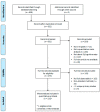Effect Sizes, Power, and Biases in Intelligence Research: A Meta-Meta-Analysis
- PMID: 33023250
- PMCID: PMC7720125
- DOI: 10.3390/jintelligence8040036
Effect Sizes, Power, and Biases in Intelligence Research: A Meta-Meta-Analysis
Abstract
In this meta-study, we analyzed 2442 effect sizes from 131 meta-analyses in intelligence research, published from 1984 to 2014, to estimate the average effect size, median power, and evidence for bias. We found that the average effect size in intelligence research was a Pearson's correlation of 0.26, and the median sample size was 60. Furthermore, across primary studies, we found a median power of 11.9% to detect a small effect, 54.5% to detect a medium effect, and 93.9% to detect a large effect. We documented differences in average effect size and median estimated power between different types of intelligence studies (correlational studies, studies of group differences, experiments, toxicology, and behavior genetics). On average, across all meta-analyses (but not in every meta-analysis), we found evidence for small-study effects, potentially indicating publication bias and overestimated effects. We found no differences in small-study effects between different study types. We also found no convincing evidence for the decline effect, US effect, or citation bias across meta-analyses. We concluded that intelligence research does show signs of low power and publication bias, but that these problems seem less severe than in many other scientific fields.
Keywords: bias; effect size; intelligence; meta-meta-analysis; meta-science; power.
Conflict of interest statement
The sponsors had no role in the design, execution, interpretation, or writing of the study.
Figures



Similar articles
-
Effect Declines Are Systematic, Strong, and Ubiquitous: A Meta-Meta-Analysis of the Decline Effect in Intelligence Research.Front Psychol. 2019 Dec 19;10:2874. doi: 10.3389/fpsyg.2019.02874. eCollection 2019. Front Psychol. 2019. PMID: 31920891 Free PMC article. Review.
-
Publication bias impacts on effect size, statistical power, and magnitude (Type M) and sign (Type S) errors in ecology and evolutionary biology.BMC Biol. 2023 Apr 3;21(1):71. doi: 10.1186/s12915-022-01485-y. BMC Biol. 2023. PMID: 37013585 Free PMC article.
-
Small class sizes for improving student achievement in primary and secondary schools: a systematic review.Campbell Syst Rev. 2018 Oct 11;14(1):1-107. doi: 10.4073/csr.2018.10. eCollection 2018. Campbell Syst Rev. 2018. PMID: 37131395 Free PMC article.
-
Low statistical power and overestimated anthropogenic impacts, exacerbated by publication bias, dominate field studies in global change biology.Glob Chang Biol. 2022 Feb;28(3):969-989. doi: 10.1111/gcb.15972. Epub 2021 Dec 10. Glob Chang Biol. 2022. PMID: 34736291 Free PMC article.
-
Are Effect Sizes in Emotional Intelligence Field Declining? A Meta-Meta Analysis.Front Psychol. 2019 Jul 16;10:1655. doi: 10.3389/fpsyg.2019.01655. eCollection 2019. Front Psychol. 2019. PMID: 31379681 Free PMC article.
Cited by
-
A meta-analysis of conditioned fear generalization in anxiety-related disorders.Neuropsychopharmacology. 2022 Aug;47(9):1652-1661. doi: 10.1038/s41386-022-01332-2. Epub 2022 Apr 30. Neuropsychopharmacology. 2022. PMID: 35501429 Free PMC article.
-
Is the Psychopathic Brain an Artifact of Coding Bias? A Systematic Review.Front Psychol. 2021 Apr 12;12:654336. doi: 10.3389/fpsyg.2021.654336. eCollection 2021. Front Psychol. 2021. PMID: 33912115 Free PMC article.
-
"statcheck": Automatically detect statistical reporting inconsistencies to increase reproducibility of meta-analyses.Res Synth Methods. 2020 Sep;11(5):574-579. doi: 10.1002/jrsm.1408. Epub 2020 Apr 27. Res Synth Methods. 2020. PMID: 32275351 Free PMC article.
-
Psychiatric Symptoms, Cognition, and Symptom Severity in Children.JAMA Psychiatry. 2024 Dec 1;81(12):1236-1245. doi: 10.1001/jamapsychiatry.2024.2399. JAMA Psychiatry. 2024. PMID: 39196567
-
Are People-Centered Intelligences Psychometrically Distinct from Thing-Centered Intelligences? A Meta-Analysis.J Intell. 2021 Sep 30;9(4):48. doi: 10.3390/jintelligence9040048. J Intell. 2021. PMID: 34698222 Free PMC article. Review.
References
-
- Asendorpf Jens B., Conner Mark, Fruyt Filip De, Houwer Jan De, Denissen Jaap J. A., Fiedler Klaus, Fiedler Susann, Funder David C., Kliegl Reinhold, Nosek Brian A., et al. Recommendations for increasing replicability in psychology. European Journal of Personality. 2013;27:108–19. doi: 10.1002/per.1919. - DOI
Grants and funding
LinkOut - more resources
Full Text Sources

